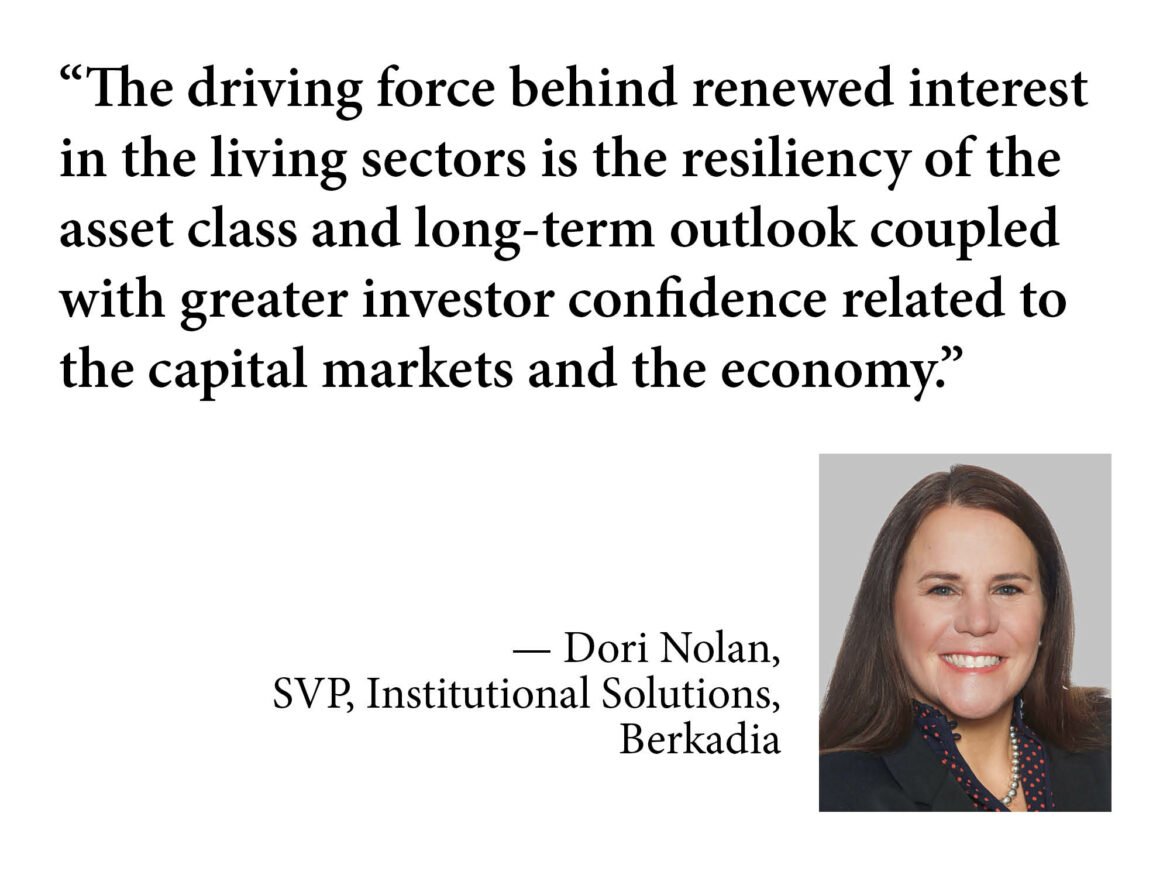Since the Federal Reserve began raising rates in March 2022 to combat inflation, the real estate market has faced challenges such as rising interest rates, capital market volatility and economic uncertainty. These factors caused many institutional investors to pause their real estate investment activities compared to historical levels. Despite ongoing volatility, investors are gradually re-entering the market, driven by several factors.
Key reasons for the pause included a challenging fundraising and capital markets environment, the unpredictable cost of capital, a scarcity of transactions leading to a lack of pricing discovery and widening bid/ask spreads. Some institutional investors were impacted by the “denominator effect,” resulting in an overweighting to real estate and the need for portfolio rebalancing. Additionally, to create bolster funds for other portfolio issues, some institutional investors entered redemption queues seeking liquidity. Broader capital market constraints reduced the availability of equity, while simultaneously driving a growing preference for structuring investments as debt rather than equity among those who remained active.
During this period of muted transaction activity, private investors capitalized on the market’s dislocation. These investors increasingly prioritized their acquisition efforts toward newer vintage core and core-plus assets over value-add or development opportunities, reflecting a shift toward higher quality assets and locations. Consequently, liquidity for older vintage assets in secondary and tertiary markets dwindled and has yet to rebound in a material way.
Over the past few quarters, institutional investors have gradually returned to the market, reflecting a growing confidence in certain real estate sectors. Specifically in the living sectors, apartment transaction activity has increased by roughly 25 percent year-over-year, and liquidity is starting to flow back into the market — particularly equity. Lenders are aggressive, offering competitive loan terms, and we are seeing more institutional investors showing up on property tours and bid sheets. Moreover, on the multifamily side, the agencies (Fannie Mae and Freddie Mac) provide stability and liquidity to apartment owners no matter where we are in the real estate cycle.
The driving force behind renewed interest in the living sectors is the resiliency of the asset class and long-term outlook coupled with greater investor confidence related to the capital markets and the economy. This resurgence is positively impacting liquidity and pricing. Today, cap rates for top-tier assets remain in the 4 to 5 percent range, with larger transactions (especially those exceeding $100 million), drawing increased investor attention. Institutional activity is expected to continue improving, barring significant headwinds. We anticipate increased cross-border capital flowing into the United States as investors seek diversification. Market fundamentals are projected to strengthen further, and we expect a rise in value-add opportunities and development activity as conditions become more favorable.
At Berkadia, we are advising clients through this dynamic real estate market cycle. As of June 2025, we closed $5.5 billion in investment sales transaction activity, up from $3.7 billion during the same period in 2024, an increase of nearly 50 percent. This growth highlights our expertise in helping clients make informed real estate investment decisions. Our alliance with Knight Frank offers valuable insights into institutional investor sentiment and market trends globally, enabling our clients to better understand the global real estate landscape.
Berkadia is a content partner of REBusiness. To learn more about Berkadia SFR/BTR, click here.


